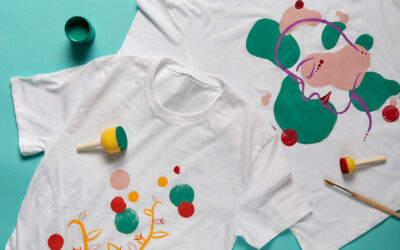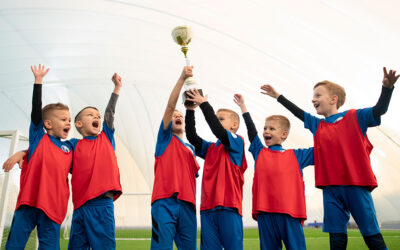With the new year just around the corner, it’s the perfect time to practice goal setting with your little ones!
Learning how to set goals offers a variety of benefits regardless of age, as it encourages the development of time management skills, focus, purpose, and responsibility. Goal-setting can also help build confidence and positive habits.
There are plenty of ways to make this experience both fun and practical for the whole family: you can get as creative as you’d like in brainstorming and visualising your family’s goals, and you could incorporate fun rewards into each part of the goal setting process.
Keep reading for six easy steps to effectively practice goal setting with your kids!
1. Learn how to track your goals across 2025
First things first, you’ll want to make sure you and the kids have a reliable way of tracking your progress when it comes to meeting your goals throughout the year. For instance, you could use a 2025 diary to set out a timeline for your goals and keep track of any key dates or deadlines that are related to those goals.
Let’s say that your kids wanted to learn how to scuba dive before a family trip to Hamilton Island, for instance. Keeping track of your scuba class dates and the holiday departure date can provide an organic timeline for achieving that goal.
The same goes for academic and even professional goals too! With a 2025 planner tracking your family’s goal-setting progress, everyone can stay in the loop with one another’s progress and be there to cheer each other on from milestone to milestone.
2. Start with a growth mindset
Before you get into the actual practice of setting goals, take a moment to teach or remind your little ones about the importance of developing a growth mindset. According to Dr. Carol Dweck, a growth mindset means believing that you can develop your skills and knowledge through effort over time. This helps foster resilience and perseverance, especially in the face of potential setbacks, and it encourages your children to take a more positive attitude towards learning.
With a growth mindset in place, your kids will approach each step of the goal setting process with a sense of curiosity and motivation. So parents, set a great example for your kids by adopting a growth mindset for yourself. By being able to demonstrate the benefits of this attitude shift, you can make the value of goal-setting far more tangible for your little learners as well.
3. Brainstorm ideas for the year ahead
Once your kids have a positive mindset towards goal setting, it’s time to brainstorm some ideas for the year ahead. You could start by getting them to pick out cards with different categories corresponding to different aspects of their life, and encouraging them to think of a goal or two for each category. These could include school, sports, creative hobbies, friends, health, and more.
For example, if your kids are interested in sports, maybe they’d like their goal to be improving their swimming skills, or learning a new team sport after school. If they like books, or want to get better at reading, maybe you could help them set a reading goal for the year.
Encourage your little ones to be an active part of this process. It’s important for them to feel a sense of ownership over their goals, no matter how big or small they might be.
4. Make your goals SMART
Now that your family has ideas for their goals, it’s important to make them SMART: Specific, Measurable, Achievable, Relevant and Time-bound. This helps clarify your goals, and makes it easier to stay on track by providing clearer checkpoints for success. Here’s a quick summary of the SMART framework:
- Specific: what exactly do you want to achieve with this goal?
- Measurable: quantify your goal – what number or metric will define success?
- Achievable: can you reach this goal with the time and resources you have? If not – how could you break it down to make it more attainable?
- Relevant: does this goal align with your family’s values and desires?
- Time-bound: what time frame will you achieve your goal in?
Try starting with up to three goals that resonate the most with your family, and use the SMART framework to give yourself the best chance of achieving them. For example, if your child’s goal is to read more books this year, a SMART version of that goal could be, “I will read 12 chapter books outside of school by December.” This reframing shows just how easy it is to adapt vague goals into actionable SMART goals.
5. Visualise your goals
Visualisation is a powerful tool in goal setting, but it can mean different things to different types of thinkers – so feel free to get really creative with this step! You could, for instance, make a family vision board by drawing or collaging the things that represent your goals, you could create a goal ladder for each goal, or you could write affirmations to practice as daily motivation towards your goals.
Using a 2025 diary is another great way to lay out a timeline for your goals while also teaching your little ones key organisational skills. You can schedule in the different steps needed, and you can make it more visually stimulating by encouraging your kids to add stickers or by using colourful pens.
6. Celebrate your achievements as you go
As your little ones make steps towards achieving their goals, don’t forget to celebrate the wins along the way as well as at the end! Focus on giving them process praise – this means praising their efforts instead of their results, which will help to further develop their growth mindset. For example, if their goal was to improve swimming skills, you might say, “I’m so proud of you for putting in the effort to practice swimming outside of your classes! Your hard work is really paying off.”
In conclusion, goal setting is a valuable activity that the whole family can enjoy. By encouraging a growth mindset and involving your little ones in every part of the process – from brainstorming to defining, visualising and achieving their goals – they’ll build their confidence and develop lifelong skills that will set them up for success.
Servicing Brisbane, Gold Coast, Sunshine Coast and beyond, Kids on the Coast is an online guide for parents. With kids events and activities, attractions & things to do with kids, schools and education, school holiday guides, health & wellbeing for families, parenting and lifestyle news. Located on Gold Coast, Sunshine Coast & Brisbane, QLD.


